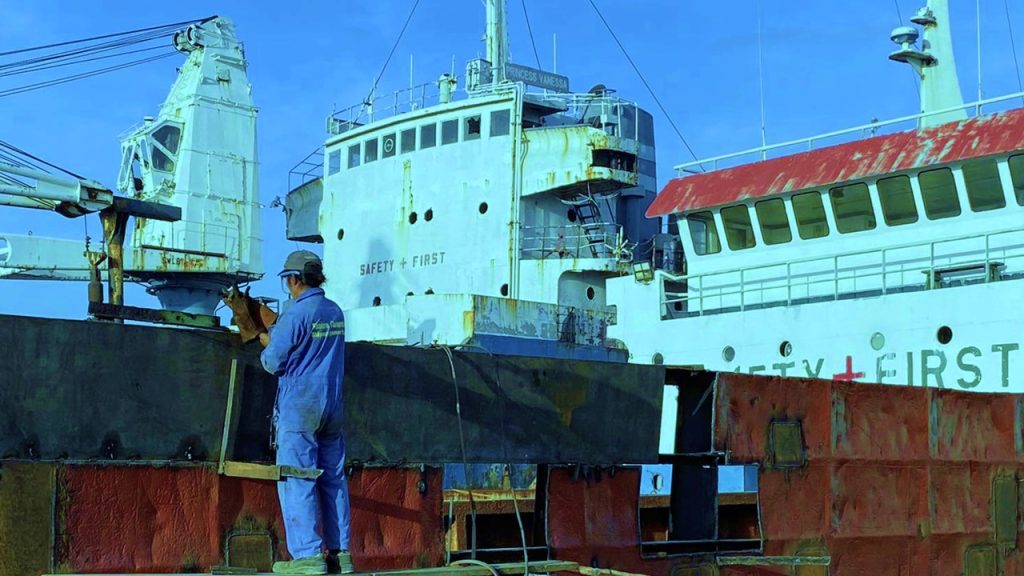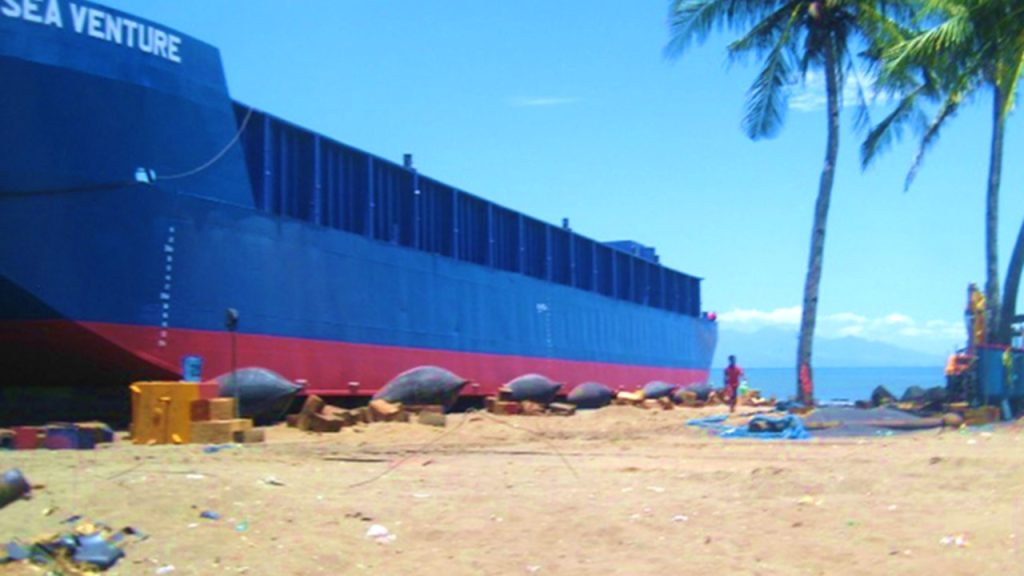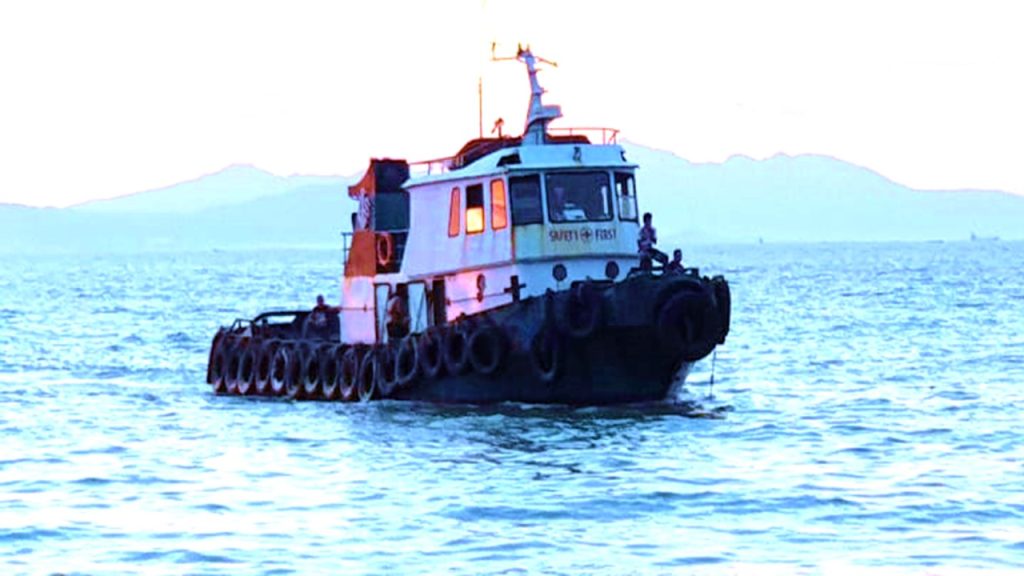In the bustling shipbuilding industry of the Philippines, a remarkable feat takes place every day as skilled Filipino shipbuilders meticulously construct barges. These massive vessels, known for their versatility and strength, play a vital role in various industries such as transportation, construction, and even oil exploration. With their expert craftsmanship and unwavering commitment to quality, Filipino shipbuilders have earned a reputation for building robust barges that can withstand the harshest maritime conditions. From carefully selecting materials to employing innovative construction techniques, this article delves into the fascinating world of how these talented artisans bring these floating workhorses to life.
Click here to view our barge shipbuilding capabilities.
The Importance of Barges in the Philippine Maritime Industry
Barges form an essential component of the Philippine maritime industry, playing a crucial role in various sectors such as transportation, construction, and offshore operations. Not only do barges offer a cost-effective mode of transporting bulk goods and heavy equipment between islands, but they also facilitate economic activities by providing access to remote areas that are otherwise inaccessible by land or traditional vessels.
One significant advantage of using barges is their ability to transport oversized and overweight cargo, which would be challenging for other types of ships or trucks. Barges can be customized to meet specific requirements, allowing for the safe transportation of construction materials like cement, steel bars, and aggregates. This versatility makes them invaluable in infrastructure projects where building materials need to be transported efficiently to different sites.
Furthermore, to construct barges locally contributes in the development of the Philippine maritime industry as well as employment opportunities. By investing in local shipyards and manufacturing facilities for barge production, the country can boost its economy while retaining intellectual property rights. The construction process also necessitates a skilled workforce, creating jobs across various sectors, from engineering to fabrication.
To construct barges and other vessels in the Philippine maritime industry cannot be overstated. Their unique capabilities allow for efficient transportation of essential goods and equipment across archipelagos while supporting infrastructure development and job creation within the country. As technology advances and demand grows further still in this diverse nation with immense potential, it is essential to recognize how this essential vessel continues to shape and transform both regional economies and overall national progress.

Step-By-Step Process to Construct Barges
The construction of barges is an intricate process that requires careful planning and execution. Filipino shipbuilders have developed a step-by-step approach to ensure the quality and efficiency of each barge they construct.
Throughout this step-by-step process, Filipino shipbuilders pay close attention to detail and adhere strictly to industry standards. Their expertise in crafting barges showcases their dedication to quality craftsmanship while meeting clients’ needs in various maritime industries such as transportation of goods or offshore oil drilling support.

Step 1: Planning and Design to Construct Barges
The first step in constructing a barge is careful planning and design. Shipbuilders in the Philippines understand the importance of thorough preparation before starting any construction project. During this stage, they collaborate with clients to determine their specific needs and requirements for the barge. Factors such as intended use, size, cargo capacity, propulsion systems, and regulatory compliance are considered. The shipbuilders leverage their expertise to develop detailed engineering plans that outline every aspect of the construction process.

Step 2: Material Selection to Construct Barges
Choosing the right materials is crucial for building a durable and efficient barge. Filipino shipbuilders source high-quality steel to ensure strength and reliability. They meticulously inspect the materials for any defects or imperfections before using them in construction. Given that barges are often subjected to harsh marine environments, corrosion resistance is a key consideration when selecting materials. Specialized coatings or galvanization may be applied to protect against rusting due to constant exposure to saltwater.
Additionally, Filipino shipbuilders prioritize sustainability by opting for eco-friendly materials whenever possible. They prefer using renewable wood alternatives like bamboo or recycled composite materials as a deck covering options instead of traditional hardwoods. This not only reduces environmental impact but also contributes to cost savings over time.

Step 3: Construction Process
Once planning is complete and materials have been selected, shipbuilders move on to the actual construction phase.
The construction process begins by preparing the shipyard for building. This involves clearing the area, leveling the ground, and setting up a framework to support the vessel during construction. Shipbuilders then lay down the keel, which serves as the foundation of the ship’s structure.
Next, they start assembling the hull by attaching steel or aluminum plates to form its shape. These plates are carefully welded together to ensure strength and durability.
Once the hull is assembled, shipbuilders continue to build up the structure of the ship. They add bulkheads, which are walls that divide different compartments within the vessel. These bulkheads not only provide structural support but also help with stability and safety.
After the bulkheads are in place, shipbuilders install various systems and equipment inside the ship. This includes electrical wiring, plumbing, ventilation systems, and machinery for propulsion.
Shipbuilders work meticulously to ensure that all systems and equipment are installed with precision. The electrical wiring is carefully laid out, connecting various components to power sources and control panels. Plumbing systems are intricately designed, ensuring efficient water supply and drainage throughout the ship.
Ventilation systems play a crucial role in maintaining a comfortable environment onboard and removing any potentially harmful substances or gases. These systems are strategically placed throughout the ship, providing fresh air circulation in living quarters, engine rooms, and other compartments.
In addition to the electrical, plumbing, and ventilation systems, other crucial components are also meticulously installed. Advanced communication systems are integrated into the ship, allowing seamless connectivity with other vessels and shore-based facilities. These systems enable efficient coordination among crew members and provide a means of communication with the outside world.
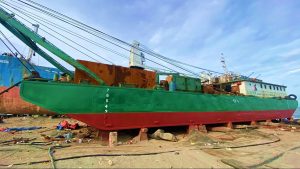
Step 4: Safety Measures: Ensuring a Secure Work Environment to Construct Barges
Shipbuilding is a complex and labor-intensive process that involves various hazards. To ensure the safety of workers, Filipino shipbuilders follow stringent safety measures to create a secure work environment. One crucial aspect of these measures is the provision of adequate personal protective equipment (PPE).
Workers are provided with helmets, gloves, safety goggles, and steel-toed boots to protect them from potential head injuries, chemical exposure, eye damage, and foot injuries caused by heavy objects or tools. Additionally, mandatory training sessions are conducted to educate workers about the proper usage of PPE and handling hazardous materials. This emphasis on PPE not only protects the workers but also improves their productivity as they can concentrate fully on their tasks without worrying about their safety.
Another significant safety measure implemented by Filipino shipbuilders is regular maintenance checks of equipment and machinery used in the shipbuilding process. Any malfunctioning or faulty equipment can cause severe accidents or delays in production. Therefore, maintenance teams conduct routine inspections to identify any issues promptly. This proactive approach ensures that faulty equipment is repaired or replaced quickly before it poses a threat to worker’s safety or disrupts the workflow.
Overall, these robust safety measures adopted by Filipino shipbuilders highlight their commitment to creating a secure work environment for their employees while consistently striving for excellence in shipbuilding projects. By emphasizing PPE provision and regular maintenance checks, these shipbuilders demonstrate a deep understanding that workers’ safety should always remain paramount throughout all stages of construction.

Step 5: Testing and Quality Assurance: Checking for Durability to Construct Barges
Step 5 of the construction process to construct barges in the Philippines is testing and quality assurance, specifically checking for durability. This step ensures that the barges are built to withstand the harsh conditions they will face at sea. Shipbuilders in Cavite, Manila, Navotas, Batangas, Subic Bay, Cebu, and Davao understand that durability is key to a barge’s success in carrying heavy cargo and enduring rough waters.
During this step, shipbuilders subject the barges to various tests. One crucial test is evaluating their structural integrity by applying different loads and stresses on different parts of the barge. This helps determine if any weak points exist and allows for adjustments to be made before finalizing construction. Additionally, anti-corrosion coatings are inspected and verified to ensure they adhere properly and provide long-term protection against rust and other potential damage.
To achieve durability, shipbuilders utilize advanced techniques such as precision welding and combining high-quality materials with proven design models. By adhering to established industry standards, Filipino shipbuilders have gained a reputation for constructing highly durable barges that can withstand extreme weather conditions.
A successful test result during this stage not only signifies confidence in the barge’s ability to navigate oceans but also guarantees its longevity under demanding circumstances. Through meticulous attention to detail during testing and quality assurance processes, Filipino shipyards contribute significantly to global maritime commerce by producing reliable barges capable of transporting goods efficiently across vast distances without compromising on safety or durability.

Historical Background: Influence of Spanish and American Colonization on Shipbuilding Techniques
The art of shipbuilding in the Philippines has been shaped by centuries of colonization, particularly by the Spanish and American powers. The Spanish colonization of the islands in the 16th century introduced European shipbuilding techniques and tools to the Filipino shipbuilders. Under Spanish rule, a thriving maritime industry developed, with galleons being built to facilitate trade with Mexico.
However, it was during American colonization in the early 20th century that significant changes were made to Philippine shipbuilding practices. American engineers and naval architects brought modern technologies and methodologies that revolutionized the industry. Advanced machinery, such as steam-powered saws and drills, replaced traditional hand tools, making the construction process more efficient.
This blend of Spanish and American influences had a profound impact on Filipino shipbuilding techniques. It resulted in an amalgamation of traditional craftsmanship with Western innovations, creating a unique style characterized by sturdy wooden hulls paired with modern machinery for faster construction times. Today, these historical influences continue to shape how Filipino shipbuilders construct barges – showcasing their rich heritage while adapting to global advancements in maritime technology.

The Art of Filipino Shipbuilding
The art of Filipino shipbuilding is deeply rooted in centuries of maritime tradition. Across the archipelago, skilled craftsmen have honed their techniques to construct barges that are both sturdy and reliable. What sets Filipino shipbuilding apart is the emphasis on using locally sourced materials and sustainable practices.
One interesting aspect of this craft is the intricate knowledge passed down from generation to generation. Shipbuilders understand how different types of wood behave in various conditions, allowing them to create vessels that withstand the test of time. Moreover, their expertise extends beyond constructing barges – they possess a deep understanding of navigation techniques and the challenges faced by seafarers.
Perhaps one of the most remarkable aspects of Filipino shipbuilding is its adaptability to modern advancements while preserving traditional methods. While technology has introduced new tools and materials, many artisans continue to incorporate ancient rituals into their shipbuilding process. This fusion creates a unique blend where past meets present—a testament to the resilience and ingenuity inherent in Filipino culture.
In conclusion, Filipino shipbuilding not only showcases exceptional craftsmanship but also reflects the rich marine heritage woven into every corner of this nation. From hand-selecting local timber to employing age-old techniques alongside modern innovation, Filipino shipbuilders have elevated their craft into an art form worthy of admiration. Their commitment towards sustainability and long-lasting vessels further underscores their place as custodians of a timeless tradition passed down through generations.
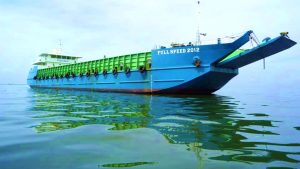
Traditional Shipbuilding Methods: Wooden Hull Construction and Handcrafted Details
To construct barges using traditional shipbuilding methods involves intricate wooden hull construction and meticulously handcrafted details. In a world dominated by modern technologies, these age-old techniques have managed to preserve the essence of craftsmanship and add unparalleled charm to the finished vessels. Skilled shipwrights combine their deep knowledge of different wood types with their expertise in shaping and joining individual planks to create a robust yet elegant hull structure.
One fascinating aspect of traditional wooden hull construction is the use of natural materials and techniques that have stood the test of time. Shipbuilders carefully select woods such as oak, teak, or mahogany for their strength, durability, and resistance to water damage. The planks are then expertly shaped using both hand tools and specially made saws, allowing them to fit together snugly without compromising structural integrity. This attention to detail ensures that each barge possesses not only an aesthetically pleasing exterior but also exceptional sea-keeping qualities.
What sets these traditional barges apart from their mass-produced counterparts is the meticulous attention given to handcrafted details. Every aspect of the vessel’s design receives personal care from skilled craftsmen who possess innate artistry combined with years of experience. From intricate carvings on figureheads or decorative railings to engraved inscriptions on rudder handles or polished brass fittings, every element showcases the dedication and pride poured into its creation.

Modern Innovations: Incorporating Technology Into Shipbuilding
In the ever-evolving world of shipbuilding in the Philippines, modern innovations have revolutionized and streamlined the construction of barges. Incorporating technology into this traditional industry has not only increased efficiency but also improved safety standards. One such innovation is the use of 3D printing technology to fabricate intricate components for barges. By utilizing additive manufacturing techniques, shipbuilders can create complex structures with less time and labor involved. This not only speeds up the production process but also allows for greater design flexibility to meet specific customer requirements.
Another exciting advancement in shipbuilding technology is the adoption of autonomous systems to construct barges. By incorporating artificial intelligence (AI) and robotics, shipbuilders are able to automate various tasks that were previously manually intensive. For instance, AI-powered robots can now perform welding, sanding, and painting procedures with a higher level of precision and accuracy than human workers. This helps reduce errors and yields a more consistent build quality throughout the construction process.
Furthermore, virtual reality (VR) has become an indispensable tool in modern shipbuilding practices. Shipbuilders can now utilize VR technology to visualize designs in three-dimensional space before any physical construction takes place. This allows for a better assessment of potential design flaws or spatial limitations while providing an immersive experience that aids decision-making processes. Additionally, VR can be used as a training tool for new employees, allowing them to familiarize themselves with complex assembly procedures without risking any on-the-job accidents.

Modern Shipbuilding Techniques: Introduction of Steel Materials and Advanced Machinery
In recent years, the shipbuilding industry has witnessed a significant shift towards modern techniques to construct barges. One of the most notable advancements has been the introduction of steel materials. Steel offers numerous advantages over traditional materials like wood and concrete, including increased durability, resistance to corrosion, and higher load-bearing capacity. The use of steel in barge construction ensures that these vessels can navigate through harsh weather conditions and carry heavy cargo without compromising their structural integrity.
Furthermore, the advent of advanced machinery has revolutionized the way barges are built. Shipbuilders now have access to cutting-edge tools and equipment that enable them to streamline the construction process and optimize efficiency. For instance, CNC (Computer Numerical Control) machines allow precise cutting and shaping of steel plates with minimal wastage. Additionally, robotic welding technologies ensure consistent weld quality while reducing labor costs associated with manual welding techniques.
These modern shipbuilding techniques not only result in stronger and more reliable barges but also contribute to environmental sustainability. Steel is highly recyclable, making it an eco-friendly choice for constructing vessels as it reduces the demand for raw materials and minimizes waste generation during production. Moreover, advanced machinery aids in optimizing energy consumption during construction, further reducing carbon emissions associated with shipbuilding activities.
With steel materials and advanced machinery paving the way for modern shipbuilding techniques in barge construction, we can expect continued advancements in this field. As technology continues to evolve, shipbuilders will find new ways to enhance vessel performance while minimizing environmental impact.
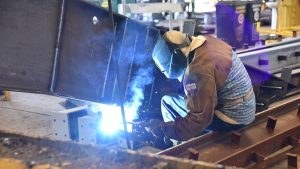
Materials and Tools: Key Components to Construct Barges
Filipino shipbuilders take great pride in their craftsmanship and attention to detail when constructing barges. One of the key components to construct barges is they focus on the selection of materials. To ensure durability and longevity, high-quality steel is often favored for the barge’s hull. This choice not only enhances strength but also helps with buoyancy when carrying heavy loads. Additionally, other materials such as wood, concrete, or aluminum are strategically incorporated into various parts of the barge to serve specific purposes such as decking or reinforcement.
In addition to selecting the right materials, Filipino shipbuilders also utilize a wide range of tools during the construction process. These tools vary depending on each worker’s task and expertise but are essential in achieving precision and efficiency. From basic handheld tools like hammers and wrenches to more sophisticated equipment like welding machines and hydraulic systems, every tool has its role in turning raw materials into fully functional barges.
Overall, Filipino shipbuilders demonstrate their mastery by carefully considering both materials and tools during construction. Their understanding of how different substances interact with water’s corrosive effects plays a vital role in creating robust barges capable of withstanding heavy-duty usage over extended periods.
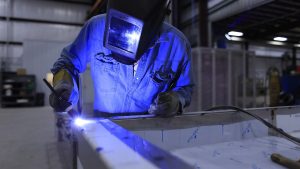
Skilled Workforce: The Backbone of Filipino Shipbuilders
The success of the Filipino shipbuilding industry can be attributed to its skilled workforce, which forms the backbone of this booming sector. With a long-standing tradition of maritime trade and an abundance of natural resources, it is no surprise that the Philippines has emerged as a global leader in constructing barges. These vessels, essential for transporting goods across bodies of water, require meticulous craftsmanship and engineering expertise.
What sets Filipino shipbuilders apart is their adeptness to construct barges that are not only functional but also built to withstand harsh weather conditions. The skilled workforce combines modern techniques with traditional craftsmanship, resulting in durable barges that meet international standards. Their keen eye for detail ensures that every aspect of construction is meticulously executed – from welding and riveting to fitting out the interiors. Moreover, their ability to adapt and innovate enables them to continuously enhance their construction techniques and promote sustainable practices within the industry.
One cannot underestimate the importance of continuous training and development initiatives in maintaining the highly skilled workforce necessary to construct barges. Reliable shipbuilding companies like Amaya Dockyard & Marine Services Inc. in Tanza, Cavite, invest heavily in providing technical training programs to both new recruits and existing employees, ensuring that they keep up with evolving technologies and industry best practices. By nurturing talent within its own shores through these programs, the shipbuilding industry not only fosters innovation but also contributes significantly to boosting employment opportunities nationwide.
Filipino shipbuilders’ dedication to excellence has earned them an esteemed reputation worldwide.

Challenges Faced by Shipbuilders: Competition, cost management, and environmental considerations
To construct barges in the Philippines is a complex task that shipbuilders face, and it comes with its fair share of challenges. One significant challenge faced by shipbuilders in this industry is the intense competition. Barge construction companies constantly strive to outdo each other in terms of quality, technology, and efficiency. This competition not only puts pressure on shipbuilders to continuously innovate but also requires them to stay ahead of the curve by adopting new construction techniques and materials.
Another major challenge for shipbuilders is cost management. The construction and assembly process can be costly due to various factors such as labor expenses, raw material prices, and fluctuations in currency exchange rates for international procurement. Shipbuilders, therefore, need to closely monitor these costs while ensuring that they maintain high-quality standards. Effective cost management strategies are crucial for their survival in a fiercely competitive environment where clients are increasingly conscious about project budgets.
In recent times, environmental considerations have emerged as a critical challenge for shipbuilders to construct barges. Environmental regulations have become stricter worldwide, driving the demand for eco-friendly vessels that reduce emissions and minimize pollution. Shipbuilding companies must invest heavily in research and development to develop greener technologies and sustainable practices throughout the manufacturing process. Additionally, they need to adapt their designs and construct vessels that comply with stringent environmental regulations without compromising on performance or safety standards.

Are You Looking for the Best Shipbuilding Company to Construct Barges in the Philippines?
When it comes to shipbuilding companies in the Philippines, Amaya Dockyard & Marine Services Inc. (ADMSI) in Tanza, Cavite, Philippines, stands out as one of the best choices to construct barges. With their vast experience and expertise in the industry, they have gained a reputation for delivering high-quality and cost-effective solutions.
- Email us: info@amayadockyard.com
- Call our 24-hour hotline: +63 917 633 0479
- Viber: +63 917 633 0479
- WhatsApp: +63 917 633 0479
- Facebook Messenger: Click here
- Click here to inquire
What sets ADMSI apart from others is its commitment to innovation and continuous improvement. They use state-of-the-art technology and modern techniques to ensure that each barge they construct meets international standards of safety, efficiency, and durability. By combining traditional shipbuilding craftsmanship with cutting-edge practices, Amaya Dockyard excels in delivering top-notch barges that can withstand harsh marine conditions while maximizing operational performance.
Furthermore, ADMSI understands the importance of customization to meet specific requirements. Whether it’s design modifications or incorporating special features, their team works closely with clients to tailor-make each barge according to their unique needs. This approach not only ensures customer satisfaction but also speaks volumes about Amaya Dockyard’s dedication to providing personalized solutions.
If you’re looking for the best shipbuilding company in the Philippines to construct barges for your maritime business, look no further than Amaya Dockyard & Marine Services Inc. Their proven track record in delivering cost-effective and high-quality vessels showcases their expertise and commitment to customer satisfaction. With their innovative approach and focus on customization, ADMSI is set apart from other shipbuilders in the industry.
Summary: How Filipino Shipbuilders Construct Barges
In conclusion, the construction of barges by Filipino shipbuilders is a testament to both their skill and innovation. The attention to detail and craftsmanship to construct barges is truly remarkable. From the initial planning stages to the final touches, every step of the process is carefully executed.
What sets Filipino shipbuilders apart is their ability to adapt to different customer needs and requirements. Whether it’s a barge for transporting goods or a floating platform for offshore operations, they have the expertise to deliver exceptional results. Their commitment to quality and safety ensures that each barge meets industry standards and can withstand even the harshest conditions.
Furthermore, Filipino shipbuilders take pride in their sustainable practices. The use of locally sourced materials not only supports the local economy but also reduces environmental impact. By building durable barges that have minimal maintenance requirements, they are contributing to a more sustainable shipping industry.
Filipino shipbuilders like ADMSI have established themselves as frontrunners in constructing high-quality barges. Their unique blend of craftsmanship, adaptability, and sustainability sets them apart from other shipbuilding industries worldwide. With their constant drive for improvement and innovation, it’s no wonder why Filipino-built barges are highly sought after in both domestic and international markets.

